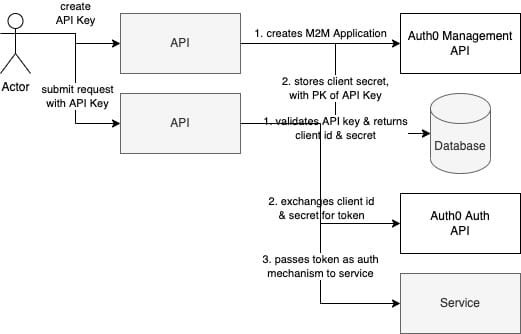The future of Application Programming Interfaces (APIs) is marked by several trends and innovations that are shaping the landscape of data integration. APIs have become the backbone of modern software development, enabling seamless communication and data exchange between different applications and services. As technology evolves, the role and capabilities of APIs are also evolving, driven by various factors such as the increasing demand for connectivity, the rise of new technologies, and the need for efficient data management.
In this article, I explore some key trends and innovations that are shaping the future of APIs and data integration.
GraphQL Adoption for the Challenge of Diverse Data Formats and Structures

GraphQL, a query language for APIs developed by Facebook, is gaining traction as an alternative to traditional REST APIs. Unlike REST APIs, where the server determines the structure of the response, GraphQL empowers clients to specify their data requirements and request only the data they need, reducing over-fetching and under-fetching of data. This approach enhances efficiency and flexibility in data retrieval, making it a preferred choice for many developers.
Example: GitHub’s API v4 is implemented using GraphQL. Developers can request precisely the data they need, whether it’s information about repositories, commits, or user profiles, streamlining the process and minimizing unnecessary data transfer.
Event-Driven Architectures for the Challenge of Real-time Data Integration
APIs are moving towards event-driven architectures which decouple components and services, where systems communicate through events rather than traditional request-response patterns. This enables real-time data integration and improves responsiveness by triggering actions in response to specific events, making it suitable for applications that require near-instant updates and notifications.
Example: Apache Kafka is a distributed event streaming platform that facilitates the building of real-time data pipelines and streaming applications. It is widely used for its ability to handle high-throughput, fault-tolerant event streams.


(Source: Khriji, S., Benbelgacem, Y., Chéour, R. et al. Design and implementation of a cloud-based event-driven architecture for real-time data processing in wireless sensor networks.)

Serverless Computing for the Challenge of Scalability and Resource Efficiency
Serverless computing models, such as AWS Lambda and Azure Functions, are influencing API development. Developers can deploy functions as individual units, triggering them in response to specific events. This approach simplifies development, reduces infrastructure management overhead, and enhances scalability. Serverless computing allows developers to focus on writing code without managing the underlying infrastructure. Functions are executed in response to events, and developers are billed based on actual usage.
Example: AWS Lambda is a popular serverless computing service. Developers can deploy functions in various languages, and these functions are automatically scaled based on demand. It simplifies development and reduces operational overhead.

API Security Enhancements for the Challenge of Security and Privacy Concerns
With the increasing number of cyber threats, API security is becoming a top priority. Innovations in API security include the adoption of OAuth 2.0, OpenID Connect, and API gateways with enhanced security features. These measures aim to protect sensitive data, and prevent unauthorized access, data breaches, and other cyber threats. OAuth 2.0 and OpenID Connect are commonly used for authentication and authorization.
Example: Auth0 is an identity platform that provides authentication and authorization services. It supports OAuth 2.0 and OpenID Connect, allowing developers to secure APIs and applications with robust identity management.

Hypermedia APIs for the Challenge of Discoverability and Adaptability
Hypermedia APIs, also known as HATEOAS (Hypermedia As The Engine Of Application State), provide links within API responses, guiding clients on the available actions. This approach enhances discoverability and reduces the dependency on documentation, making APIs more self-descriptive, self-explanatory, and adaptable to changes.
Example: HATEOAS is commonly implemented in RESTful APIs. For instance, in a response from a weather API, hypermedia links could guide clients to related information, such as forecasts for different dates or locations.

Source: BissTalk Blog
Machine Learning Integration for the Challenge of Intelligent Data Processing
Machine learning capabilities are being integrated into APIs to enable intelligent decision-making, data analysis, and automated data processing. APIs that incorporate machine learning models can provide advanced analytics, predictive insights, and personalized recommendations based on the data they handle.
Example: Google Cloud Vision API uses machine learning to analyze and understand the content of images. Developers can use this API to extract information about objects, landmarks, and text within images.

API Marketplaces and Ecosystems for the Challenge of Collaboration and Innovation
The concept of API marketplaces is gaining popularity, where organizations can discover, consume, and publish APIs on a centralized platform. This fosters collaboration and innovation, allowing developers to leverage a wide range of functionalities and services from different providers within a unified ecosystem.
Example: RapidAPI is a marketplace that connects developers with thousands of APIs. It simplifies API consumption by providing a unified interface for accessing various functionalities from different providers.

Standardization and Interoperability for the Challenge of Interoperability and Consistency
Efforts to standardize API specifications, such as OpenAPI and JSON Schema, contribute to better interoperability between different systems. Standardization simplifies API development, promotes consistency, and facilitates integration across diverse platforms.
Example: OpenAPI Specification is a widely adopted standard for describing RESTful APIs. It provides a machine-readable format to describe the API’s structure, making it easier for developers to understand and integrate with the API.

Source: InfoQ
Decentralized Identity and Blockchain Integration for the Challenge of Trust and Decentralization
APIs are exploring decentralized identity solutions and integrating them with blockchain technology to enhance security, privacy, and trust in data transactions. Decentralized identity systems provide users with more control over their personal information.
Example: Microsoft’s decentralized identity platform, Ion, uses blockchain technology (currently built on the Bitcoin blockchain) to enable secure and decentralized identity management without relying on a central authority.

Edge Computing Integration for the Challenge of Low-latency Data
With the rise of edge computing, APIs are being optimized for low-latency data processing at the edge of the network. This is particularly important for applications that require real-time responsiveness and reduced reliance on centralized servers.
Example: AWS IoT Greengrass enables edge computing by extending AWS capabilities to devices. APIs designed for edge computing allow devices to locally process data, reducing latency and dependence on centralized servers.

Hybrid Integration Platform (HIP)
A Hybrid Integration Platform is a set of integration software that helps connect, maintain, and govern integrating business applications, whether on-premise or cloud. It provides seamless integration between different applications, systems, and data sources, regardless of whether they are on-premise, in the cloud, or both. It should provide organizations with all of the tools they need to make it simpler and easier to integrate data and applications across any on-premises and multi-cloud environment. With data silos broken down, businesses have an incredible opportunity to turn their data into actionable insights, allowing them to make better decisions faster.
Here are some examples of Hybrid Integration Platforms (HIP):
- Axway: Axway’s hybrid integration platform empowers new ad-hoc integrators to create innovative products by employing integrations by combine modern APIs and traditional integration patterns.
- Boomi: Boomi is a unified, cloud-native platform that enables you to connect everything and engage everywhere across any channel, device, or platform.
- Elastic.io: Elastic.io is a born-in-the-cloud innovator and an established expert in cloud integration solutions in Europe.
- Opentext: Opentext offers a comprehensive, unified integration platform that facilitates real-time information exchange between your B2B, applications, data, and people.
- Mulesoft: Mulesoft’s Anypoint Platform™ is a unified, single solution for iPaaS and full lifecycle API management.
- Oracle: Oracle Integration eliminates barriers between business applications through a combination of machine learning, embedded best-practice guidance, prebuilt integration, and process automation.
- Software AG: Software AG’s webMethods Integration Platform is a proven, pre-integrated software suite featuring the market-leading Enterprise Service Bus.
- Talend: Talend Data Fabric offers a single suite of cloud apps for data integration and data integrity, built on an open and flexible architecture.
These platforms help businesses integrate their diverse IT environments, including on-premises and cloud-based systems, and manage them as a cohesive whole.


Courtesy: ABN AMRO Bank
AI-Driven Data Feast via APIs
AI-Driven Data Feast via APIs refers to the use of APIs (Application Programming Interfaces) to serve diverse, real-time data to AI systems. APIs act as bridges between varied data sources and AI, enabling smarter decisions and adaptive learning.
Here are some examples:
- Recommendation Systems: Consider recommendation engines like Netflix’s, which leverage your past viewing habits and the habits of other users to suggest your next binge-worthy series. Behind the scenes, its algorithms analyze massive datasets to understand your preferences, ultimately enhancing your streaming experience.
- Supply Chain Management: AI-driven forecasting applied to supply chain management can reduce errors by between 20 and 50 percent —and translate into a reduction in lost sales and product unavailability of up to 65 percent. This is possible because AI models consume real-time data and continuously identify new patterns, enabling fast, agile actions because the model anticipates demand changes rather than just responding to them.
- Personalized Marketing: In marketing, APIs can feed customer data to AI models, which then analyze this data to create personalized marketing campaigns. For example, an e-commerce website might use an API to gather data about a customer’s browsing and purchase history. This data is then fed into an AI model that predicts the customer’s future behavior and recommends products accordingly.
- Feast (Feature Store): Feast is an open-source feature store for machine learning developed by GO-JEK and Google Cloud. It allows teams to manage, store, and discover features for use in machine learning projects. Feast provides a unified platform for feature storage, facilitating discovery and feature reuse across machine learning projects. It manages both warehouse and serving databases for historical and the latest data. Using a Python SDK, users can generate training datasets from the feature warehouse.
- Data-Driven AI in Healthcare: The rapid growth of data-driven AI has taken center stage in numerous industries, including healthcare. For instance, APIs can feed patient data to AI models, which then analyze this data to predict disease outcomes, recommend treatments, or even identify potential epidemics.
- Data-Driven AI in Finance: In the finance industry, APIs can feed transaction data to AI models, which then analyze this data to detect fraudulent activity, predict market trends, or recommend investment strategies.
These examples illustrate how APIs are essential in serving diverse, real-time data to AI systems, enabling smarter decisions and adaptive learning.
Read more articles:
5 API Styles Any Decision Maker Should Know

I am a Digital Transformation Consultant with over 25 years of experience across banking, finance, healthcare, retail, Industry 4.0, and government sectors. I specialize in designing data-driven digital transformation strategies and building roadmaps that enhance business value and promote people-centric excellence. I founded Transform Partner in London, UK, which reflects my passion for entrepreneurship and extensive experience in leveraging modern technologies to address market challenges. My work includes leading digitization and digital transformation projects for Saudi Arabia’s Vision 2030 and the UAE’s Digital Strategy 2025. Additionally, I serve as an executive advisor and coach for corporate learning and ‘Knowledge Transfer’ workshops.








